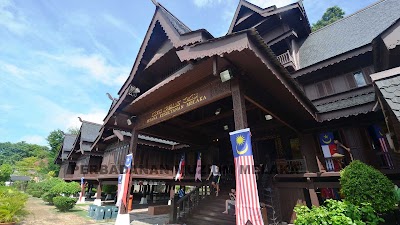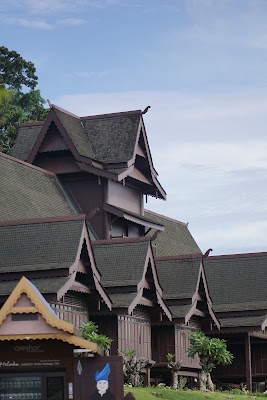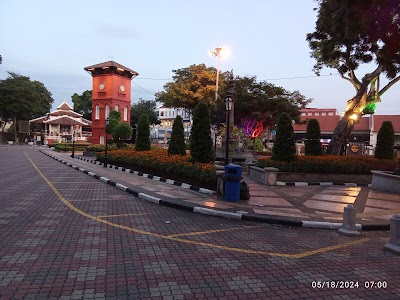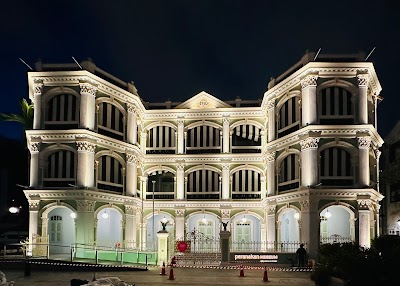Malacca Sultanate Palace (Istana Kesultanan Melaka)
Overview
Certainly! Here’s a revised version of your travel description:
---
Known for its rich history and cultural significance, the Malacca Sultanate Palace, or Istana Kesultanan Melaka, is a stunning wooden replica of the original 15th-century palace of Sultan Mansur Shah, one of the most prominent rulers of the Malacca Sultanate. Nestled at the base of St. Paul's Hill in modern-day Malacca, Malaysia, this architectural marvel offers an intriguing glimpse into the opulent lifestyle and grandeur of the Malaccan empire during its golden age.
The Malacca Sultanate was a formidable maritime power and a thriving hub for international trade from the 15th to the 16th centuries. Its strategic location along the Straits of Malacca attracted traders from China, India, the Middle East, and Europe, establishing it as one of Southeast Asia's most prosperous regions. Sultan Mansur Shah, who reigned from 1456 to 1477, is particularly noted for his expansionist policies and for fostering diplomatic ties with Ming China. The palace's reconstruction is based on meticulous descriptions found in the Malay Annals, a significant historical document that chronicles the history of the Malacca Sultanate and its rulers.
Upon arrival, visitors are often captivated by the palace's grand architecture. Constructed entirely of timber, it showcases traditional Malay craftsmanship with its distinctive tiered roof, ornate wooden carvings, and intricate floral motifs. Elevated on stilts—a hallmark of Malay architecture—the palace provides a commanding view of the surrounding area while also offering a defensive advantage.
The interior of the palace is equally impressive. The ground floor is divided into several rooms, each serving a distinct function within the sultan's administration. The audience hall, or Balairung Seri, is the space where the sultan would convene with advisers and foreign diplomats. You can easily envision the sultan seated on an elaborate throne, surrounded by courtiers in vibrant traditional attire, discussing critical matters of state and trade.
Each room in the palace unveils a different facet of Malaccan life. The living quarters feature period-appropriate furniture, sumptuous textiles, and a variety of artifacts that shed light on the daily lives of the sultan and his family. For those intrigued by the legal system, the Balai Penghadapan, or judgement hall, reveals the procedures used to settle disputes and administer justice during the sultanate’s rule.
Additionally, the palace houses an extensive museum that showcases the history of the Malacca Sultanate and its pivotal role in the development of Southeast Asia. Visitors can explore a plethora of exhibits, including weaponry, traditional costumes, musical instruments, and ancient manuscripts. These artifacts not only highlight the sophistication of Malay culture but also underscore the significant contributions of the Malacca Sultanate to the region’s history.
The palace frequently hosts special exhibitions and educational programs, offering enriching experiences such as guided tours, hands-on workshops, and cultural performances. These activities enable visitors to gain a deeper understanding and appreciation of the Malacca Sultanate's legacy. Interactive displays with multimedia presentations engage younger audiences, making it a suitable destination for family visits.
An intriguing aspect of the Malacca Sultanate Palace is its resilience and cultural significance, epitomized by its reconstruction. Expert historians and architects undertook an exhaustive study of the Malay Annals and other historical documents to create this authentic replica. Completed in 1984, this reconstruction stands today as a testament to Malaysia’s rich heritage and enduring spirit.
The palace gardens, beautifully landscaped with traditional Malay flora, provide a peaceful retreat where visitors can stroll and reflect on the beauty of their surroundings. Statues and sculptures throughout the garden vividly depict iconic figures and significant events from the Malacca Sultanate era, serving as a perfect complement to the palace visit.
In conclusion, the Malacca Sultanate Palace is more than just a historical monument; it is a living museum that vividly brings to life the history and cultural richness of the Malacca Sultanate. By visiting this spectacular replica, tourists can step back in time and experience the grandeur of a bygone era, gaining an appreciation for the pivotal role Malacca played in shaping the history and culture of Southeast Asia. Whether you are a history buff, a culture enthusiast, or simply a curious traveler, a visit to the Malacca Sultanate Palace promises to be an enriching and unforgettable experience.
---
This version is structured for clarity, engagement, and ease of reading while highlighting key topics effectively.






